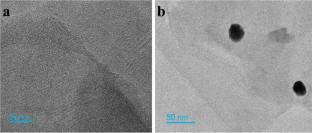Monatshefte für Chemie - Chemical Monthly ( IF 1.8 ) Pub Date : 2024-03-19 , DOI: 10.1007/s00706-024-03196-2 Yunyun Qiu , Lingyu Jiang , Li Xiang , Jianshe Tang

|
A sensitive and selective electrochemical method for the determination of kanamycin was established first at the surface of a pencil graphite-embedded PTFE cannula electrode according to the analysis mechanism of target-induced spatial configuration of aptamer-complementary strand hybridization. The electrochemical characteristics studies of homemade electrodes were using cyclic voltammetry. The result showed that the PFTE nested pencil graphite electrode with polished and gold deposits has good electrode application potential. The electrochemical analysis method for kanamycin was performed using differential pulse voltammetric techniques. Modification of the homemade electrode surface increased its DPV response of methylene blue in the presence of kanamycin because more analytes affected the aptamer-complementary strand hybridization conformation. Thus, more G-quadruplexes formed to capture methylene blue. The developed electrochemical sensor yielded a positive correlation between the electrochemical signal and the logarithmic concentration of kanamycin with a wide linear range (15.3 nM to 0.24 mM) and a low limit of detection of 10 nM. The developed sensor was assessed by the analysis of kanamycin in wastewater treatment plant effluent samples by spiked recovery method. The analysis results (recoveries range of 97.5–105% and RSD range of 2.1–7.8%, respectively) proved that the method performance was both acceptable and admirable.
Graphical abstract
中文翻译:

基于适体互补链杂交靶标诱导空间构型的卡那霉素检测电化学生物传感器平台
根据适体-互补链杂交靶诱导空间构型的分析机理,首先在铅笔石墨包埋PTFE套管电极表面建立了灵敏、选择性的电化学测定卡那霉素的方法。采用循环伏安法研究了自制电极的电化学特性。结果表明,带有抛光金沉积的PFTE嵌套铅笔石墨电极具有良好的电极应用潜力。卡那霉素的电化学分析方法采用差分脉冲伏安技术进行。自制电极表面的修饰增加了其在卡那霉素存在下对亚甲基蓝的 DPV 响应,因为更多的分析物影响了适体互补链杂交构象。因此,形成更多的 G-四链体来捕获亚甲基蓝。开发的电化学传感器在电化学信号和卡那霉素的对数浓度之间产生正相关,具有宽线性范围(15.3 nM至0.24 mM)和10 nM的低检测限。通过加标回收法分析废水处理厂废水样品中的卡那霉素来评估所开发的传感器。分析结果(回收率范围分别为 97.5-105%,RSD 范围分别为 2.1-7.8%)证明该方法的性能是可以接受的并且令人钦佩。



























 京公网安备 11010802027423号
京公网安备 11010802027423号